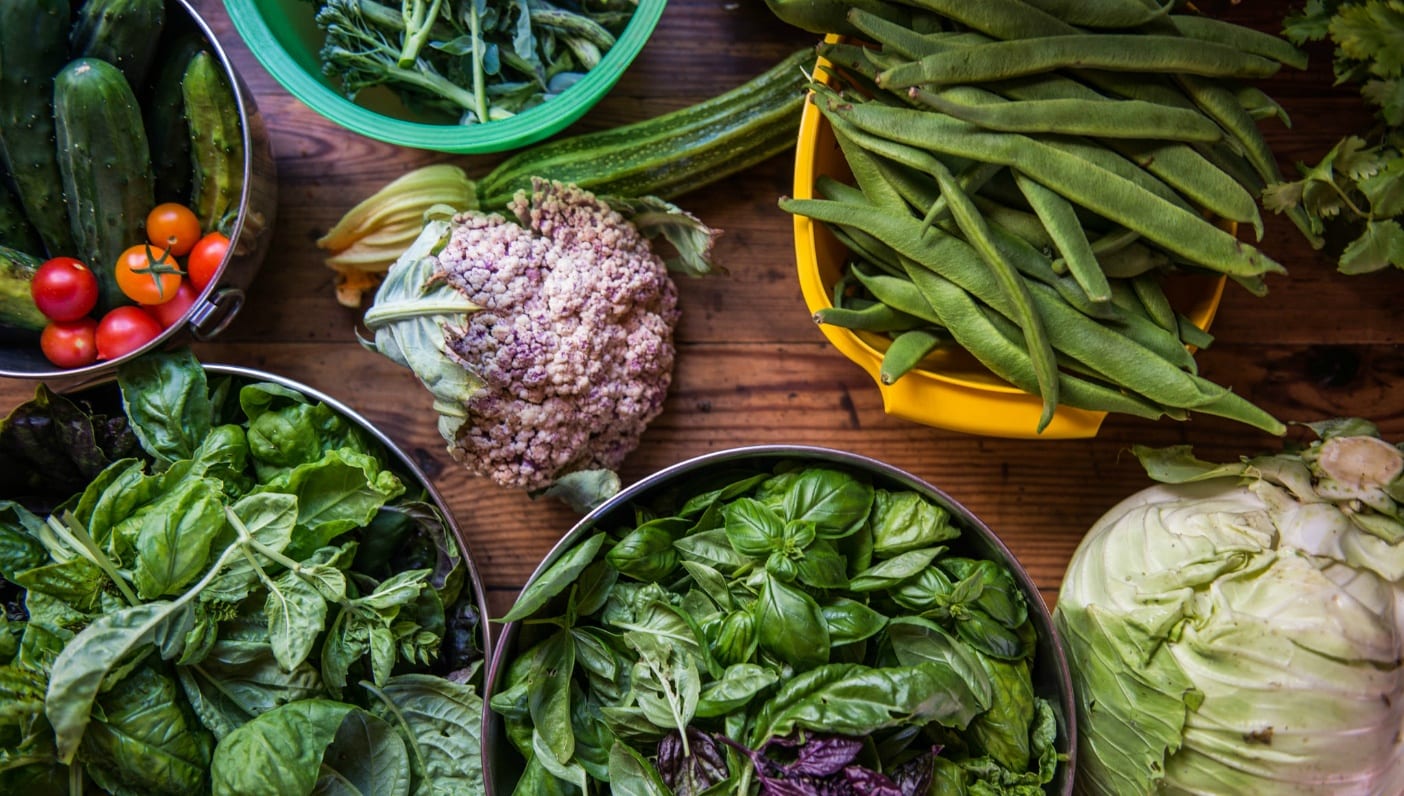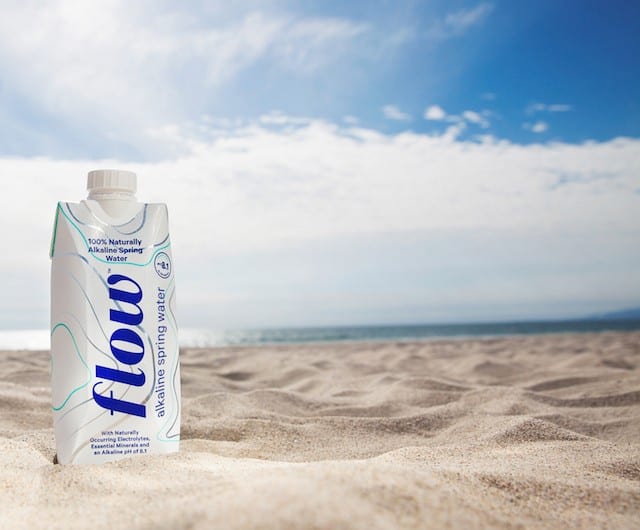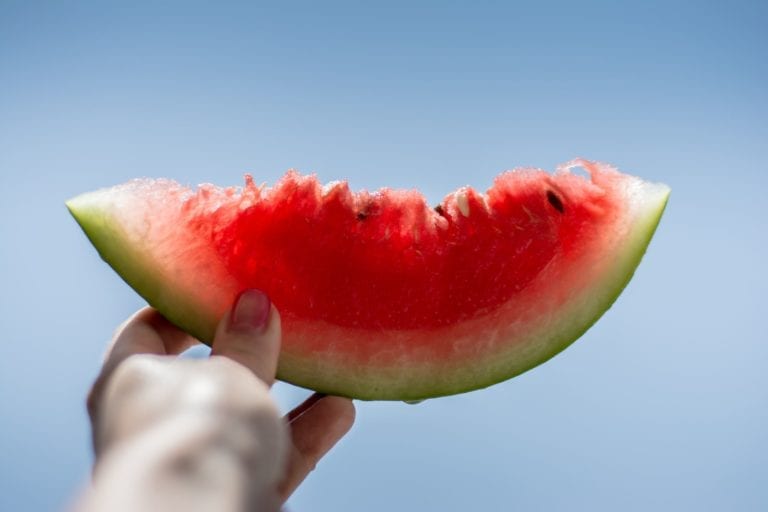
I’m not a big fan of diets—which is maybe why I may have completely missed the boat on all things alkaline. But it’s a thing, and I was curious.
I glanced over the list of foods to eat and which to avoid, inquisitive if signing up for it would mean depriving myself of my beloved coffee. (Heads-up, it does!) And yet the foods were healthy, approachable, and not all that different from my normal diet. I had to omit some vices, but for the most part, things looked pretty manageable. I decided to give it a try.
What is the alkaline diet?
The alkaline diet is based on the idea that what you eat affects the pH level (the acidity or alkalinity) of your body. According to celebrity chef and Wanderlust speaker Jason Wrobel, foods that are alkaline have a pH of about 7.2 or higher. He says that foods that are more acidic—like highly-processed, high-in-sugar, or artificial foods—cause our body to be in an acidic state. „That’s a breeding ground for disease,“ says Jason. „We know from research, particularly cancer research, that mutated cells and diseased cells can only thrive in and proliferate in an acidic environment.“
Enter the alkaline diet. To help balance the body’s pH levels, the diet emphasizes foods that are high in alkaline (certain fruits and vegetables) and eliminates or highly reduces foods that are acidic (meat, dairy, alcohol). It doesn’t have to be complicated—you can also choose drinks that can help to regulate your body’s pH levels as well. Alkaline water, for example, has a higher pH than regular drinking water. As such, proponents of the diet suggest that it can be an important part of producing the minerals your body need to begin restoring equilibrium.

What specifically do I eat on the alkaline diet?
The alkaline diet focuses on—you guessed it—foods that are highly alkalizing. Vegetables and seeds tend to have the highest alkaline levels, specifically asparagus, beets, broccoli, peas, onions, garlic, carrots, cauliflower, spinach, pumpkin seeds, flax seeds, and sesame seeds—but there are many more on this list. While not as alkalizing as vegetables, fruits are also highly alkalizing. And surprisingly, lemons and limes (which may seem acidic) are the most highly alkalizing fruits there are.
Meats (save for freshwater fish), alcohol, coffee, most sweeteners, breads, and certain nuts are acidic. Worried about eating nothing but veggies? Don’t be—there are ways to flavor them up! Alkalizing fats include olive oil, evening primrose oil, coconut oil, and sunflower oil, while butter and margarine are more acidic. Basil, rosemary, peppermint, cinnamon, thyme, and a majority of other herbs and spices are also totally okay on the alkaline diet.
And again, you can get those pH levels at a healthy level by something as simple as drinking water. Unlike other types of alkaline-infused water, Flow Alkaline Spring Water comes in a handful of yummy flavors: We’re talking cucumber + mint, lemon + ginger, watermelon + lime, and strawberry + rose.
OK, but really? Is the alkaline diet even safe?
While research is still underway to back up the diet’s fundamental claims (we wouldn’t go as far as to say it can prevent cancer), there are no studies to suggest that an alkaline diet is bad for you. The nutrition plan is largely plant-based and low in sodium, fat, and sugar—great for your overall health. Still, with the elimination of certain food groups like dairy and meat, dieters need to be cautious about getting the right nutrients elsewhere.

Here’s what happened when I tried it.
The alkaline diet isn’t that far off from what I normally eat, but it did require me to really think about my food. I substituted my morning over-easy eggs for a huge blueberry smoothie bowl. I cut back on coffee, stopped sipping on my favorite IPA, and gave up my treat of dark chocolate after dinner. I avoided gazing into the cheese case at my local co-op and said bye-bye to my beloved ciabatta. It was hard—but felt good to put some vegetables in my body.
Throughout the experiment, I noticed subtle differences that I figured could connect back to diet. Though I normally tend to opt for the healthy choice nine times out of ten, I don’t always look at every label to analyze each ingredient. While on the diet, to make sure I was sticking to alkaline foods, I was diligent in double checking where each food or ingredient fell on the list.
The absence of coffee made my mid-afternoon crash harder to tolerate, but that’s also a good indicator that I should find alternative methods for energy rather than caffeine (I chose to take naps instead and it was glorious). The removal of alcohol led to less bloating, more conscious eating, and a better night’s rest.
Many folks may be perturbed by the alkaline diet, as it is super limiting. But perhaps a good way to think about it is to enhance your diet with alkalizing foods or make the majority of things you consume alkalizing. Eat your vegetables, squeeze that lemon into your tea, and sip your alkaline water—and still enjoy the occasional vice.
In partnership with Flow Alkaline Spring Water
As the official hydration sponsor for Wanderlust, Flow Alkaline Spring Water is naturally full of healthy minerals, electrolytes and an alkaline pH of 8.1 — all in an eco-friendly Tetra Pak you can feel good about. Come visit us at the Flow with intention pop-up onsite to re-hydrate with Flow and Flow organic flavors: cucumber + mint, lemon + ginger, strawberry + rose and watermelon + lime. (Naturally alkaline, no sugar, no juice, no calories, no preservatives and no GMOs). Attendees have a chance to enter to WIN a grand prize trip to Wanderlust in Hawaii, 2019.

